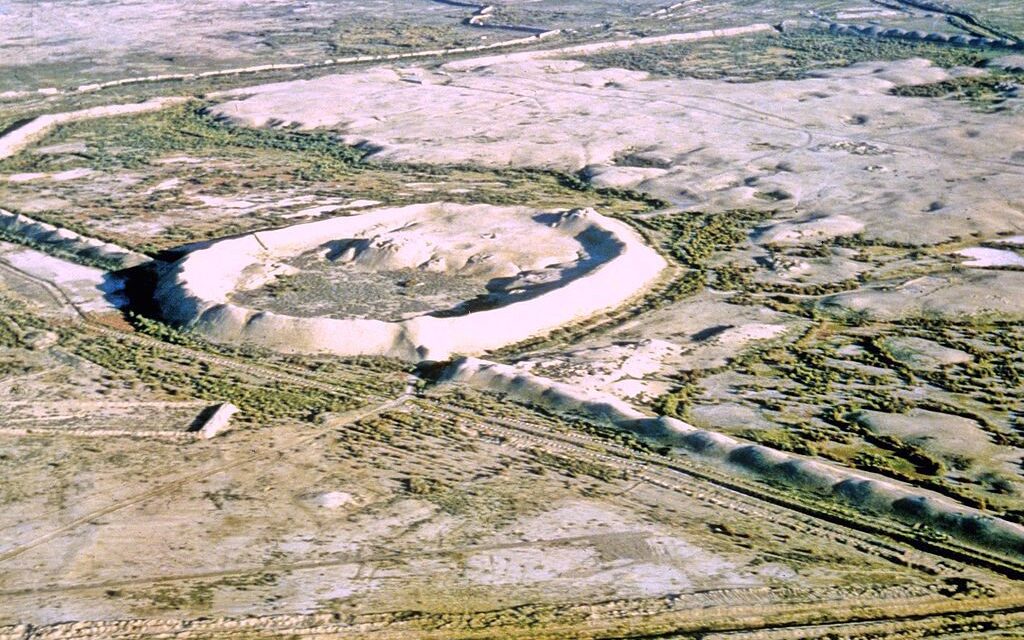Have you ever heard of the city of Merv? It doesn’t exist anymore but at one time it was probably the most populous city in the world, bigger than medieval Baghdad and Constantinople. And that’s surprising because it was located in the Karakum desert of what is now Turkmenistan. At the beginning of the 13th-Century roughly a half million people lived there, as it was an important stop on the Silk Road.
A trader arriving from Bukhara to the north-east or from Nishapur to the south-west would once have been relieved at the sight of Merv. Crisscrossed by canals and bridges, full of gardens and orchards, medieval Merv and its surrounding oasis were green and richly cultivated, a welcome reprieve from the bleakness of the Karakum desert.
The city’s enclosing walls ran in an oblong circuit of five miles, interrupted by strong towers and four main gates. Its streets were mostly narrow and winding, crowded with closely built houses and occasional larger structures: mosques, schools, libraries and bathhouses…
…Merv was famous for its exports, especially its textiles. “From this country is derived much silk as well as cotton of a superior quality under the name of Merv cotton, which is extremely soft,” noted the 12th-century Arab geographer al-Idrisi. Robes and turbans made from Merv cloth were popular around the Islamic world.
So too were Merv’s much-loved melons. “The fruits of Merv are finer than those of any other place,” wrote Ibn Hawqal, a 10th-century Arab chronicler, “and in no other city are to be seen such palaces and groves, and gardens and streams.”
The city may have had as many as ten libraries and was known as a center of learning. It was referred to as the “capital of the eastern Islamic world.” So, what happened?
In the mid 12th-Century, the territory around Merv started changing hands. The Seljuk Empire was weakened after a split among heirs and Merv was successfully sacked by Turkmen nomads. Subsequently, the city was briefly ruled by the Ghurid Dynasty before they were soundly defeated by the Khwarazmians in the early 13th Century. And that’s when everything went badly wrong.
The leader of the Khwarazmians, Shah Ala ad-Din Muhammad II, made one of the most consequential mistakes in history.
A small spark — an insult, a show of disrespect — is sometimes all it takes to ignite a war. Among the many tales of retribution echoing through history, one stands out for its scale and brutality: the tale of Genghis Khan, the Mongol leader who united the tribes of Central Asia and carved out history’s largest land empire, and his decision to wipe out the Khwarazmian Empire.
It should be noted up front that Genghis Khan was rather busy in the 1210’s conquering much of China. His attention only turned to the West after he was severely provoked. There are some variations in how the story is told, but it’s agreed that the trouble began in 1218 in the Khwarazmian city of Otrar. It was there that a Mongol-sponsored caravan was seized and its members massacred by the local governor, a man named Inalchuq who accused them of being spies. Reportedly, one survivor was allowed to bring news of what happened back to Genghis Khan.
At that point, Khan sent a delegation to Muhammad II demanding satisfaction.
Outraged by the unjust treatment of his merchants, Genghis Khan sent a diplomatic mission to the Khwarazmian Shah, Muhammad II, to seek redress for the incident. He demanded that the governor of Otrar be punished for his actions and that reparations be made for the loss of life and property. However, the Shah not only refused to comply with Genghis Khan’s demands but also added further insult by beheading the chief envoy of the diplomatic mission and sending the head back to the Mongols.
Obviously, this wasn’t the kind of response Khan was looking for, and he responded by ordering a full-fledged invasion of the Khwarazmian Empire. And once the Mongols started moving West they didn’t stop. They established the Ilkhanate Empire and seized Baghdad in 1258. Interestingly, they were only stopped in the Middle East in what is now the Gaza Strip.
As for the cities of the Khawarazmian Empire, their fate was terrifying. Merv was virtually wiped off the map.
In 1221, Merv opened its gates to Tule, son of Genghis Khan, chief of the Mongols, on which occasion most of the inhabitants are said to have been butchered. The Persian historian Juvayni, writing a generation after the destruction of Merv, wrote
“The Mongols ordered that, apart from four hundred artisans. .., the whole population, including the women and children, should be killed, and no one, whether woman or man, be spared. To each [Mongol soldier] was allotted the execution of three or four hundred Persians. So many had been killed by nightfall that the mountains became hillocks, and the plain was soaked with the blood of the mighty.”
Some historians believe that over one million people died in the aftermath of the city‘s capture, including hundreds of thousands of refugees from elsewhere, making it one of the bloodiest captures of a city in world history.
Ever since the October 7, 2023 attack on Israel launched by Hamas from the Gaza Strip, I keep going back to the history or Merv in my mind. It comes to me in a variety of contexts. There’s the idea of a weaker party insulting a stronger one, only to suffer merciless retribution. There’s the history of the Middle East and Central Asia which is a story of empires replacing empires as far back as we have records. There’s the lesson of unintended consequences both for the conquered and the conquerer. There’s the quite modern idea of human rights in which Khan would be defined as one the world’s worst monsters.
And I wonder, what would have happened if Shah Ala ad-Din Muhammad II had turned Inalchuq over to Khan and made appropriate restitution? Would the Mongols have eventually made a western expansion anyway? Or, maybe not? How many millions of people died because of one caravan? The development of the entire modern world from China to Africa to Europe, all radically changed by the rash decisions of a couple of reckless Khawarazmian men.
Today Merv is an abandoned ruin. Which of today’s cities will soon suffer the same fate?
And, be honest, how much of this history did you learn in school?







